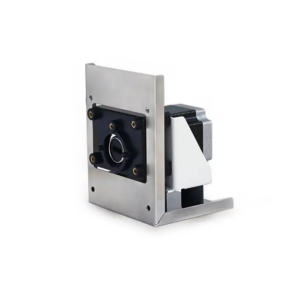Peristaltic pumps are widely used in various industries for their ability to provide accurate and reliable fluid transfer. In this article, we will delve into the features, benefits, and applications of three key components in peristaltic pump systems: peristaltic pump OEM, roller pump, and peristaltic pump tubing. By understanding their unique characteristics, we can appreciate their contributions to efficient fluid handling in different settings.

What is Peristaltic Pump OEM
Peristaltic pump OEM refers to the original equipment manufacturer that specializes in designing and producing peristaltic pumps. These manufacturers play a crucial role in developing innovative pump technologies and providing tailored solutions for specific applications.
Benefits of Peristaltic Pump OEM
- Customization and Flexibility:Peristaltic pump OEMs offer customization options to meet specific requirements, including flow rates, pressure capabilities, and material compatibility. This flexibility allows for seamless integration into various industries such as pharmaceuticals, food and beverage, and wastewater treatment.
- Precision and Accuracy:Peristaltic pumps are known for their precise and accurate fluid transfer capabilities. OEMs ensure that their pumps are designed with advanced control systems, enabling precise dosing and dispensing in applications that require high accuracy.
- Reliability and Maintenance:OEMs focus on producing durable and reliable peristaltic pumps that require minimal maintenance. This ensures uninterrupted operation and reduces downtime, making them ideal for critical processes in industries such as medical and laboratory settings.
The Working Principle of Roller Pumps
A roller pump is a type of positive displacement pump that is commonly used in agricultural and industrial applications for fluid transfer, irrigation systems, and other fluid handling tasks. Its design concept revolves around simplicity, reliability, and efficiency. They operate by squeezing fluid through a tube using rotating rollers.
Benefits and Considerations of Roller Pumps
- Cost-Effective Solution:Roller pumps are known for their cost-effectiveness, making them popular in agricultural applications such as spraying fertilizers and pesticides. They offer a reliable and affordable option for fluid transfer in these settings.
- Versatility and Compatibility:These pumps can handle a wide range of fluids, including corrosive and abrasive substances. They are compatible with various materials, allowing for efficient fluid transfer in diverse industries such as chemical processing and wastewater treatment.
- Easy Maintenance and Repair:Roller pumps are relatively simple in design, making them easy to maintain and repair. This reduces downtime and ensures continuous operation, particularly in remote or agricultural settings where immediate technical support may not be readily available.
Design Characteristics of Roller Pump
- Pump Body: The pump body of a roller pump typically consists of a cylindrical housing made of durable materials such as cast iron or stainless steel. It provides structural integrity and houses the essential components of the pump.
- Inlet and Outlet Ports: Roller pumps have clearly defined inlet and outlet ports to facilitate fluid intake and discharge. These ports are strategically positioned to optimize fluid flow, minimizing resistance and pressure losses.
- Rotating Shaft: The heart of a roller pump is the rotating shaft, which is driven by a power source such as an electric motor or an engine. The shaft extends through the pump body and is supported by bearings to ensure smooth rotation and minimize frictional losses.
- Rollers: The rollers are the primary components responsible for creating fluid displacement within the pump. Typically made of materials like rubber or synthetic polymers, the rollers are mounted on the rotating shaft at regular intervals. As the shaft rotates, the rollers press against a flexible tube or impeller, causing it to compress and expel fluid.
- Flexible Tube or Impeller: The flexible tube or impeller is an integral part of the roller pump design. It is positioned inside the pump body and acts as a conduit for fluid flow. The tube or impeller is constructed from a flexible material, allowing it to expand and contract as the rollers move over it. This expansion and contraction create a positive displacement action, drawing fluid into the pump and forcing it out through the outlet.
Understanding Peristaltic Pump Tubing
Peristaltic pump tubing is a critical component that directly interacts with the fluid being transferred. It is designed to withstand the mechanical stress of the pump’s squeezing action while maintaining fluid integrity.
Benefits and Applications of Peristaltic Pump Tubing
- Material Compatibility:Peristaltic pump tubing is available in various materials, including silicone, thermoplastic elastomers, and reinforced tubing. This allows for compatibility with different fluids, ensuring efficient and contamination-free fluid transfer in industries such as pharmaceuticals and biotechnology.
- Sterility and Cleanability:Certain peristaltic pump tubing materials are designed to meet stringent cleanliness and sterilization requirements. This makes them suitable for applications in medical and laboratory settings where maintaining a sterile environment is crucial.
- Easy Replacement and Maintenance:Peristaltic pump tubing is designed for easy replacement, reducing downtime and minimizing the risk of cross-contamination. Regular maintenance and replacement of tubing ensure optimal pump performance and prevent fluid leakage.
Peristaltic pump OEMs, roller pumps, and peristaltic pump tubing are integral components in peristaltic pump systems, offering unique features and benefits for fluid transfer applications. Peristaltic pump OEMs provide customized solutions, precision, and reliability for various industries. Roller pumps offer cost-effective and versatile fluid transfer options, particularly in agricultural and industrial settings. Peristaltic pump tubing ensures material compatibility, sterility, and easy maintenance, making it suitable for applications in pharmaceuticals, biotechnology, and laboratory environments. By understanding the strengths and applications of these components, industries can make informed decisions to optimize fluid handling processes and achieve efficient and reliable fluid transfer.